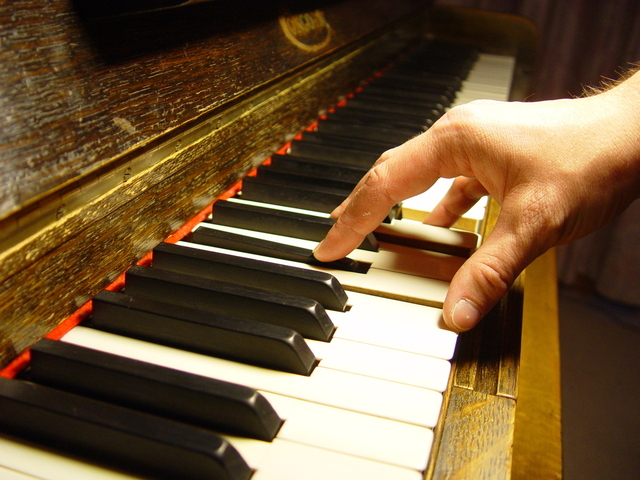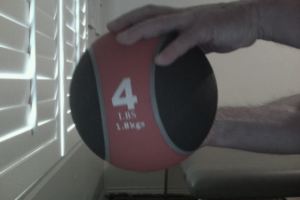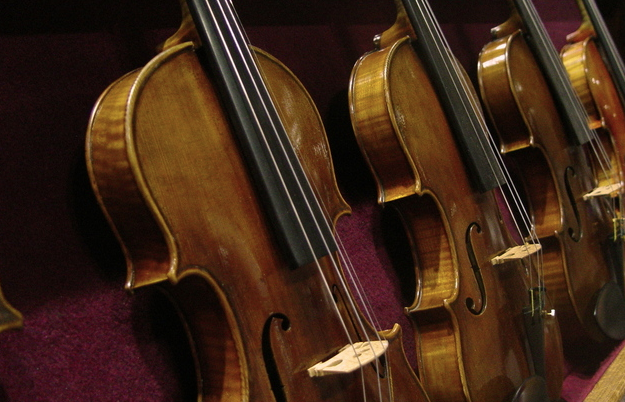Whenever I give a first Alexander Technique lesson to a musician, one of the things I’m most curious about is examining the relationship between instrumentalist and instrument.
It is often this interfacing of person with tool that begins to perpetuate many of the difficulties musicians have that led them to seek my help in the first place: chronic pain, excessive tension, inefficient breathing, poor coordination/loss of skill, etc.
But before I observe any new student with their instrument, I first observe their habits of general coordination: What do they do as they stand, as they sit, as they begin to move? Is their breathing free or fixed? How do they use their eyes? Where/how do they tend to compress/hold themselves? And so on.
It is this general, overall coordination that will have a direct impact on the specific skill and coordination they use to play their instrument.
Once we begin to bring their habits of movement and posture to light, they have a chance to become more conscious of the unconscious ways in which they interfere with the best use of themselves as they play.
I couple this new awareness with a new strategy to change these habits for the better. One of the most effective tools I get them to work with is a simple, three-step process. I’d like to share it with you here:
Step One: Start with balance
It all begins here. Whether you sit or stand when you play, how you maintain your upright balance has a significant influence on your comfort, safety and skill.
If you’re sitting, you need to be on top of your sitting bones, with your head poised lightly above. Think of your neck as being free and your spine gently releasing upward, as the weight of your torso releases downward to be supported by the chair.
It is this upward/downward opposition between the head and the pelvis that makes easy upright balance available to you. It is part of your human design.
Avoid trying to “sit up straight” (being stiff and rigid). Also avoid collapsing into the chair (make sure the chair you’re sitting in isn’t too soft, or you’ll be tempted to collapse.). Balance is the operative word here, not posture, postition or perfection.
If you’re standing, allow your weight to release evenly through your feet into the floor, as you let your head balance lightly above (just as in sitting). Again, think of your neck as being free, and let your back and shoulders release into width and elasticity.
Make sure you’re not locking your knees or distorting your pelvis by either pushing it forward, or tucking your tail. Think of your ribs as being very free to move, as you let yourself breathe easily.
Imagine yourself as mobile, dynamic and grounded, instead of stiff, fixed and planted.
Step Two: Bring the instrument to you (instead of bringing yourself to the instrument)
Once you’ve found an easy balance, bring the instrument to you (this obviously doesn’t apply to piano, drum kit, or other stationary instruments). It is much easier and more efficient to bring the instrument to you than vice versa.
Though this sounds somewhat obvious, If you were to observe yourself in a mirror as you start to play, you might be surprised to see that you’re pulling yourself out of balance toward the instrument instead of being the point of balance through which you integrate the instrument with yourself.
Understand that if your instrument is going away from your body, you must let your whole self be free to move very slightly in the opposite direction as a form of counterbalance.
Say for example, you play trumpet. As the instrument goes forward in front of you, your weight goes very slightly backward away from it. If you’re standing, this movement comes from your ankles; if you’re sitting, it comes from your hip joints (in this case because your base of support is at your sitting bones, not at your feet.)
You don’t have to try to actively move yourself backwards (in fact, doing so can actually take you out of balance). Your neuromuscular system does that on its own, as a sort of postural reflex. Just see that you’re not interfering with this reflex by stiffening your ankles (and/or hip joints).
And beyond this, you can notice how else you might be “over-preparing” yourself the instant before you actually start playing. For example, are you taking your head out of balance on your spine? Are you narrowing your shoulders as you reach for your instrument? Let the instrument come to you.
Bottom line, avoid distorting and compressing yourself before you start playing. Let yourself stay in fluid, upright, expansive and easy balance.
Step Three: Renew the thought.
This is the step that tends to get most neglected in the process. Once you are clear about your balance, and about how you bring the instrument to you in order to stay in balance, you need to regularly redirect your thinking so that you’re not falling back into habit. It is very, very easy to fall back into habit, if you’re not vigilant about this.
As I mentioned in a recent article, you need to be clear about two things each moment you begin to play: your intention and your use. Remember to take your time. Stopping to constructively redirect thought/effort is NEVER a waste of time.
So allow yourself to notice your habits with your instrument. Notice your balance (including any kind of excess holding or tension) without your instrument, as well. Observe how you make contact with your instrument. Are you free, or fixed?
Aim for free. Be patient and persistent, and enjoy your newfound ease and continued improvement.



